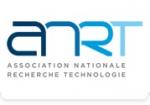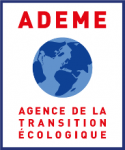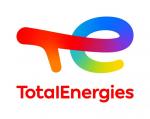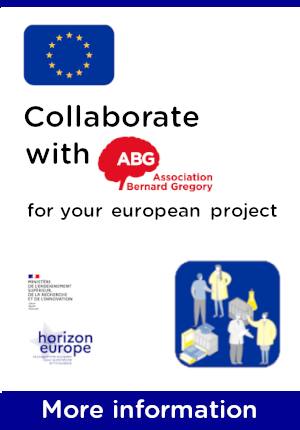Approche hybride IA/CFD pour la simulation des impacts de gouttes lors des procédés de projection thermique // Hybrid AI/CFD Approach for Simulating Droplet Impacts in Thermal Coatings
|
ABG-133527
ADUM-67600 |
Sujet de Thèse | |
| 23/09/2025 | Autre financement public |
Université de Bordeaux
TALENCE Cedex - Nouvelle Aquitaine - France
Approche hybride IA/CFD pour la simulation des impacts de gouttes lors des procédés de projection thermique // Hybrid AI/CFD Approach for Simulating Droplet Impacts in Thermal Coatings
- Electronique
IA, Mécanique des fluides, Gouttes, Revêtement, Simulation
AI, CFD, droplet, Thermal coating, simulation
AI, CFD, droplet, Thermal coating, simulation
Description du sujet
Suspension Plasma Spraying (SPS) is an emerging industrial process, particularly for the creation of ceramic coatings resistant to thermomechanical stresses, used as long-life thermal barriers for aircraft engine. For the aeronautics industry, it is classified as a special process whose output elements can only be verified by monitoring or post-measurement, and whose deficiencies therefore only become apparent once the product is in use. In this process, the liquid suspension containing the submicron particles of the material to be deposited is injected into a thermal plasma jet to be fragmented and evaporated, releasing individual or agglomerated submicron particles that are then accelerated and melted and will impact and spread over the part to be coated to form a coating. The structure of the coating is a function of the operating conditions, from the plasma torch to the droplet impact conditions (shape, velocity, temperature, and substrate roughness). A dense or columnar structure may occur, which influences the final thermomechanical properties of the material. A full CFD simulation of the entire process is beyond reach due to limitations in the number of particles that can be simulated. Therefore, we propose a three-step approach, consisting of CFD simulations at the droplet scale combined with a stochastic approach [1] enriched by AI at the coating scale:
• The stochastic approach aims to represent realistic spray conditions (spatial, temporal, radius, velocity, and temperature distributions of the particles).
• Simulations of droplet impacts using the CFD code Notus [2] aim to populate a database representing the topology of various instantaneous representative sprayed surfaces.
• A neural network-based on CFD results aims to surpass CFD simulations capacity by representing large impact surfaces and amounts of particles. The AI tool's results can be verified and refined through additional CFD simulations.
------------------------------------------------------------------------------------------------------------------------------------------------------------------------
------------------------------------------------------------------------------------------------------------------------------------------------------------------------
Suspension Plasma Spraying (SPS) is an emerging industrial process, particularly for the creation of ceramic coatings resistant to thermomechanical stresses, used as long-life thermal barriers for aircraft engine. For the aeronautics industry, it is classified as a special process whose output elements can only be verified by monitoring or post-measurement, and whose deficiencies therefore only become apparent once the product is in use. In this process, the liquid suspension containing the submicron particles of the material to be deposited is injected into a thermal plasma jet to be fragmented and evaporated, releasing individual or agglomerated submicron particles that are then accelerated and melted and will impact and spread over the part to be coated to form a coating. The structure of the coating is a function of the operating conditions, from the plasma torch to the droplet impact conditions (shape, velocity, temperature, and substrate roughness). A dense or columnar structure may occur, which influences the final thermomechanical properties of the material. A full CFD simulation of the entire process is beyond reach due to limitations in the number of particles that can be simulated. Therefore, we propose a three-step approach, consisting of CFD simulations at the droplet scale combined with a stochastic approach [1] enriched by AI at the coating scale:
• The stochastic approach aims to represent realistic spray conditions (spatial, temporal, radius, velocity, and temperature distributions of the particles).
• Simulations of droplet impacts using the CFD code Notus [2] aim to populate a database representing the topology of various instantaneous representative sprayed surfaces.
• A neural network-based on CFD results aims to surpass CFD simulations capacity by representing large impact surfaces and amounts of particles. The AI tool's results can be verified and refined through additional CFD simulations.
------------------------------------------------------------------------------------------------------------------------------------------------------------------------
------------------------------------------------------------------------------------------------------------------------------------------------------------------------
Début de la thèse : 01/01/2026
• The stochastic approach aims to represent realistic spray conditions (spatial, temporal, radius, velocity, and temperature distributions of the particles).
• Simulations of droplet impacts using the CFD code Notus [2] aim to populate a database representing the topology of various instantaneous representative sprayed surfaces.
• A neural network-based on CFD results aims to surpass CFD simulations capacity by representing large impact surfaces and amounts of particles. The AI tool's results can be verified and refined through additional CFD simulations.
------------------------------------------------------------------------------------------------------------------------------------------------------------------------
------------------------------------------------------------------------------------------------------------------------------------------------------------------------
Suspension Plasma Spraying (SPS) is an emerging industrial process, particularly for the creation of ceramic coatings resistant to thermomechanical stresses, used as long-life thermal barriers for aircraft engine. For the aeronautics industry, it is classified as a special process whose output elements can only be verified by monitoring or post-measurement, and whose deficiencies therefore only become apparent once the product is in use. In this process, the liquid suspension containing the submicron particles of the material to be deposited is injected into a thermal plasma jet to be fragmented and evaporated, releasing individual or agglomerated submicron particles that are then accelerated and melted and will impact and spread over the part to be coated to form a coating. The structure of the coating is a function of the operating conditions, from the plasma torch to the droplet impact conditions (shape, velocity, temperature, and substrate roughness). A dense or columnar structure may occur, which influences the final thermomechanical properties of the material. A full CFD simulation of the entire process is beyond reach due to limitations in the number of particles that can be simulated. Therefore, we propose a three-step approach, consisting of CFD simulations at the droplet scale combined with a stochastic approach [1] enriched by AI at the coating scale:
• The stochastic approach aims to represent realistic spray conditions (spatial, temporal, radius, velocity, and temperature distributions of the particles).
• Simulations of droplet impacts using the CFD code Notus [2] aim to populate a database representing the topology of various instantaneous representative sprayed surfaces.
• A neural network-based on CFD results aims to surpass CFD simulations capacity by representing large impact surfaces and amounts of particles. The AI tool's results can be verified and refined through additional CFD simulations.
------------------------------------------------------------------------------------------------------------------------------------------------------------------------
------------------------------------------------------------------------------------------------------------------------------------------------------------------------
Début de la thèse : 01/01/2026
Nature du financement
Autre financement public
Précisions sur le financement
ANR
Présentation établissement et labo d'accueil
Université de Bordeaux
Etablissement délivrant le doctorat
Université de Bordeaux
Ecole doctorale
209 Sciences Physiques et de l'Ingénieur
Profil du candidat
Python, Fortran, AI, Computational Fluid Mechanics.
Python, Fortran, AI, Computational Fluid Mechanics.
Python, Fortran, AI, Computational Fluid Mechanics.
30/11/2025
Postuler
Fermer
Vous avez déjà un compte ?
Nouvel utilisateur ?
Besoin d'informations sur l'ABG ?
Vous souhaitez recevoir nos infolettres ?
Découvrez nos adhérents
 Aérocentre, Pôle d'excellence régional
Aérocentre, Pôle d'excellence régional  CASDEN
CASDEN  ASNR - Autorité de sûreté nucléaire et de radioprotection - Siège
ASNR - Autorité de sûreté nucléaire et de radioprotection - Siège  Tecknowmetrix
Tecknowmetrix  CESI
CESI  Laboratoire National de Métrologie et d'Essais - LNE
Laboratoire National de Métrologie et d'Essais - LNE  ANRT
ANRT  ONERA - The French Aerospace Lab
ONERA - The French Aerospace Lab  MabDesign
MabDesign  Généthon
Généthon  ADEME
ADEME  Institut Sup'biotech de Paris
Institut Sup'biotech de Paris  Ifremer
Ifremer  MabDesign
MabDesign  SUEZ
SUEZ  Nokia Bell Labs France
Nokia Bell Labs France  PhDOOC
PhDOOC  Groupe AFNOR - Association française de normalisation
Groupe AFNOR - Association française de normalisation  TotalEnergies
TotalEnergies




